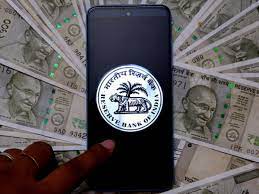Eye on Emirati flows: on the new India-UAE framework and rupee-dirham transactions
There are both risks and benefits in the rupee-dirham settlement system
The Reserve Bank of India (RBI) and the Central Bank of the UAE agreed on July 15 to establish a framework for enabling the use of the two countries’ local currencies for cross-border transactions. The move towards permitting payments in the Indian rupee and the UAE dirham is aimed at promoting their use bilaterally, thus reducing the dependence on a third country’s currency such as the U.S. dollar as an intermediary for settling transactions. As per the memorandum of understanding between the two central banks, all current account payments, including those involving the two countries’ exporters and importers, and certain “permitted” capital account transactions could be settled using either the rupee or the dirham. To facilitate settlement, the two banks are set to put in place a Local Currency Settlement System and likely, at a later date, interlink their payments messaging systems. An immediate beneficial consequence of the establishment of the settlement mechanism would be the development of a rupee-dirham foreign exchange market that would help in pricing the two currencies independent of their exchange rates with other currencies such as the dollar and the euro. Indian and Emirati businesses would not need to factor in exchange rate risks when quoting to supply goods or services to buyers in the other country, improving the ease of doing business and boosting trade.
The India-UAE local currency settlement system could also potentially serve as a precursor for other bilateral currency accords which, as an RBI Inter-Departmental Group suggested this month, could act as an important first step for the internationalisation of the rupee. While the idea is laudable, its actual success will hinge on the extent of adoption by businesses in both nations. With the UAE’s trade surplus with India widening in the months since the bilateral Comprehensive Economic Partnership Agreement came into effect in May 2022, Emirati businesses need to see remunerative avenues to deploy the potential rupee flows should they opt to receive payments in the Indian currency. One possibility, as the RBI indicated, was stepped up investment by UAE-based firms. The other possibility is of the UAE coming to serve as a currency entrepôt by enabling Indian businesses, dealing for instance with Russian suppliers, to use the West Asian country and dirham as a gateway for such transactions. Given that the UAE’s predecessor entity, the Trucial States, used the Indian rupee and later the Gulf rupee as de facto currency until the mid 1960s, it may appear natural to reestablish currency ties. Still, in a rapidly evolving global environment, businesses will base their decisions on cold economic logic and policymakers must remain cognisant of the risks emanating from such moves even as they eye the opportunities.
